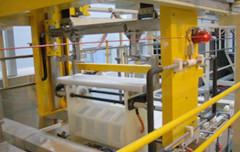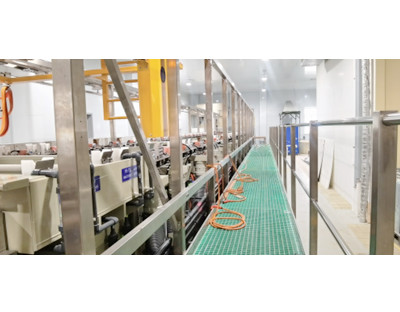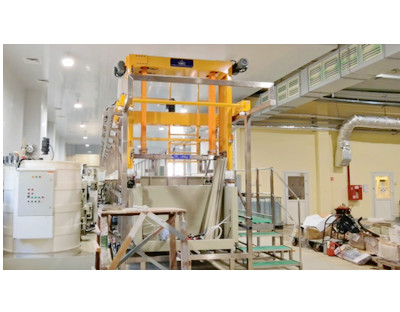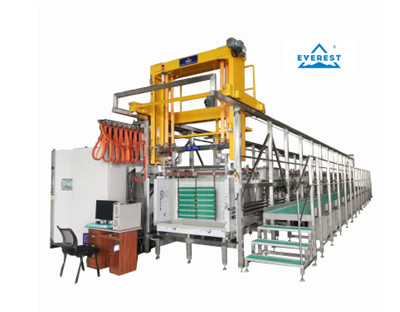Quality control of electroplating process
- Whole process control
The quality characteristics of plated parts are affected by the work quality of all links in the whole process, such as the “low hydrogen brittleness” is affected by sub processes such as pickling, electroplating and hydrogen drive. Therefore, a quality control system shall be established for the whole process of material supply, pretreatment, electroplating, post-treatment and finished product inspection.
- Control point
Starting from the analysis of general quality characteristics of plated parts, the key links that affect the quality of plated parts and the links that repeatedly cause quality problems are found in the process flow, and control points are established for key control. Find out the main influencing factors and specify the control items, contents and methods. Generally, control points are set up in the incoming inspection, etching, electroplating, hydrogen drive and passivation of raw materials.
- Process documents
Appropriate process documents shall be prepared for different electroplating parts according to their characteristics. Orthogonal tests should be actively carried out for different process flows, compositions and proportions of treatment solution and electroplating solution, electroplating process parameters (current density, working temperature, time, PH value, etc.), operation methods, etc. to find out the best process plan, improve the process level, and accumulate mature process experience.
- Process materials
4.1 Strict quality standards must be established for chemical raw materials, metal anodes and other raw materials used in the process, and the specification, brand, purity level, maximum allowable content of impurities and other contents of raw materials must be clearly specified. When the purity of commercially available raw materials cannot meet the quality requirements, the detailed purification method and quality requirements shall be determined through tests.
4.2 The change or substitution of raw materials can only be put into use after passing the small test, medium test and small batch test of the technical department, being reviewed by the head of the technical section and approved by the chief engineer or the director in charge.
4.3 Raw materials purchased into the factory shall be subject to strict quality certificate acceptance and sampling analysis inspection, and can only be put into storage after passing the acceptance.
4.4 Raw materials of different specifications and purity shall not be mixed. Flammable and explosive chemical raw materials shall be subject to special management system and isolated storage system. The storage warehouse shall be provided with qualified ventilation and heat dissipation conditions, and corresponding fire protection measures. The highly toxic substances used in electroplating shall be stored in a special highly toxic substance warehouse, which must be managed by a double person and double lock system. One of them is the person in charge of the security department of the factory, and a strict warehousing, storage and material requisition system shall be established.
- Pretreatment
5.1 Parts to be plated shall be accepted according to the technical requirements before plating, and those not meeting the requirements shall be rejected.
5.2 In order to reduce the residual stress caused by machining, grinding, forming, cold correction and other processes, and prevent cracking during electroplating, the ferrous metal parts with tensile strength greater than or equal to 1034Mpa must be subject to stress relief heat treatment before plating, and the treatment temperature must be lower than the tempering temperature of this material (generally at least 30 º C lower than the tempering temperature), but not lower than the stress relief temperature. The treatment time depends on the type and brand of metal. The corresponding temperature and time of stress relief heat treatment shall be specified for materials of different strength levels in the process document.
5.3 There must be strict requirements for the interval between sand blasting and electroplating. For high-strength steel with tensile strength above 1240Mpa, the interval shall not exceed 1h generally.
5.4 High strength steel parts with tensile strength above 1240Mpa, thin-walled parts and elastic parts shall not be strongly etched.
5.5 Cleaning after oil removal and etching shall be reasonably arranged, and cleaning methods (such as countercurrent rinsing) shall be improved to improve cleaning effect.
5.6 The cleaning quality of pretreatment before plating shall be checked by the method of checking the continuity of water film, and it is qualified if the water film continues to crack for 30s.
- Tank liquid control
6.1 The tank liquid shall be filtered regularly or continuously according to the specific process or production requirements.
6.2 Various bath solutions such as pretreatment solution (such as acid and alkali solution), electrolyte, and treatment solution after plating (such as passivation solution) must be strictly controlled during use. The proportion shall be adjusted according to the different consumption of various chemical raw materials. The analysis cycle of different tank liquid shall be specified to keep the tank liquid composition within the range specified by the process. When the analysis results of a solution for two consecutive times exceed the specified range, the analysis cycle shall be shortened.
6.3 The routine maintenance of the bath solution shall be strengthened, and a routine maintenance record system shall be established. The record contents shall include the name of the plating part, the area to be plated, the thickness of the coating, the process parameters, the analysis results of the bath solution composition, the feeding conditions, and the troubleshooting of the bath solution.
6.4 According to different bath solutions, operating frequencies, plating area, etc., through laboratory tests and in combination with the experience and data accumulated in long-term production practice, a replacement cycle should be specified for the treatment solution without regeneration value, and a large treatment cycle should be specified for the plating solution with regeneration value, so that the impurity content in the bath solution is controlled within the allowable range to restore the performance of the bath solution.
- Post plating treatment
7.1 According to the quality requirements of the plated parts, the division of work for cleaning, hydrogen removal, polishing, passivation, drying and film coating shall be reasonably arranged.
7.2 Parts requiring hydrogen removal must undergo hydrogen removal treatment after plating. All ferrous metal parts with tensile strength greater than or equal to 1034Mpa shall undergo hydrogen removal treatment after plating. Parts that need to be back plated and re plated shall be subject to hydrogen removal treatment before back plating; If there is a new phenomenon of hydrogen permeation in the process of deplating, hydrogen removal treatment still needs to be added after deplating. The parts to be plated again must be hydrogen removed after plating.
7.3 For parts requiring hydrogen removal after plating, hydrogen removal treatment shall be carried out as soon as possible after plating. The interval between electroplating and hydrogen removal treatment shall not exceed 4h for ferrous metal parts with tensile strength greater than 1240Mpa, and 10h for ferrous metal parts with tensile strength equal to or less than 1240Mpa.
- Finished product inspection
The appearance, coating thickness, adhesion and contact couple matching of the plated parts treated after plating in each tank shall be inspected and recorded. Marks or labels shall be made at appropriate positions that do not affect the quality of plated parts.
For the inspection and test inconvenient to be carried out on the plated parts, it is allowed to be carried out on the template plated under the same batch and process conditions.
- Environmental conditions
Attention shall be paid to the impact of environmental conditions on electroplating quality, and the operating environment of each sub process of electroplating shall be continuously improved, ventilation shall be strengthened, equipment for removing harmful gases and dust shall be set, technical transformation shall be strengthened, the labor intensity of operation shall be continuously reduced, and the impact of objective factors on quality shall be minimized.






 Mar. 02, 2022
Mar. 02, 2022 





